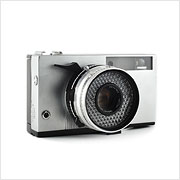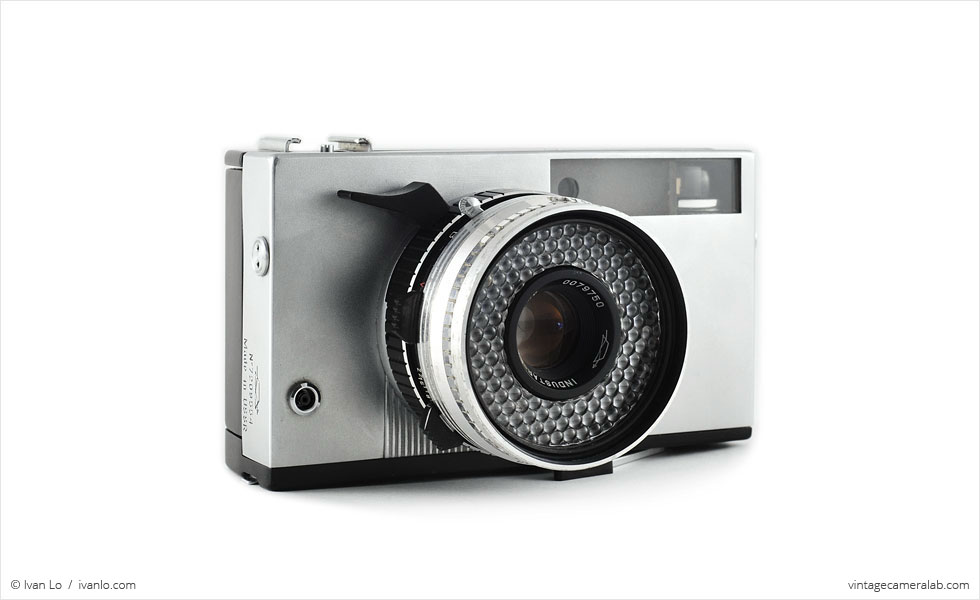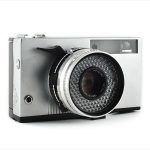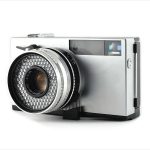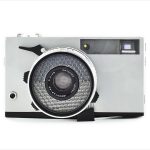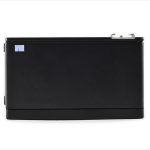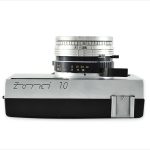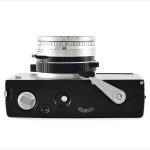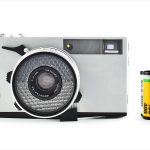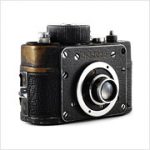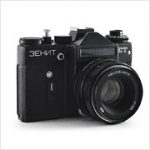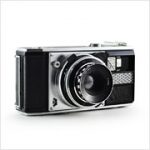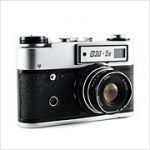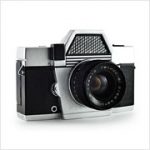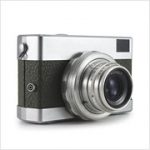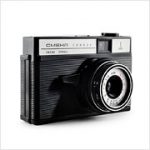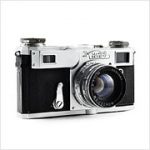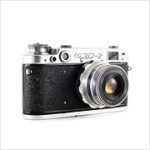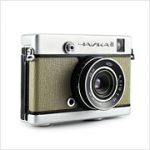KMZ Zorki 10 Specifications
| Manufacturer: | KMZ |
| Origin: | Soviet Union |
| (modern day Russia) | |
| Made in: | Krasnogorsk, USSR |
| (modern day Russia) | |
| Introduced: | 1964 |
| Type: | Rangefinder |
| Format: | 135 Film |
| Dimensions: | 12.9 x 7.7 x 7.6 cm |
KMZ Zorki 10 Overview
The KMZ Zorki 10 is a fixed-lens rangefinder produced during the Cold War by the Krasnogorsk Mechanical Works in the city of Krasnogorsk just outside Moscow. The Zorki 10 is recognized for being the very first camera with automatic exposure ever produced in the USSR as well as the first Soviet camera to disregard the government-established GOST scale by indicating film speeds with the American/German ASA/DIN systems that would eventually become ISO, the current international standard. There is also a Zorki 11 which is basically the same camera minus the rangefinder assembly.
The focal point of the Zorki 10’s sleek styling is arguably its lens: a 45mm f/2.8 Industar-63 which is purported to be one of the sharpest Soviet lenses of its time. Immediately surrounding the lens is a circular selenium light meter which powers the relatively sophisticated automatic exposure system. The shutter speed can be set by rotating the forwardmost ring on the lens barrel with ASA marking on the top and DIN markings on the bottom. Moving back, you will find a shutter speed lever at 11 o’clock with two settings: automatic (1/30 to 1/500 seconds) and bulb mode despite not having a shutter cable socket. The self-timer is at 9 o’clock and the aperture control (with manual f-stop selector) is at 8. The ring at the very base of the lens adjusts the focus and just behind that is the black shutter lever.
With the shutter lever located on the lens barrel, the only things on the top plate are the name and an accessory/cold shoe which can work with external flash units provided they are plugged into the flash sync socket on the front. The back is similarly sparse with no features save the rangefinder window in the corner. The bottom plate, on the other hand, has a film advance lever designed to be operated with the left hand, a frame counter, rewind button, tripod socket, film rewinding dial, and the film door latch.
I won’t lie; I bought this camera purely based on looks as the design was so instantly captivating that I just had to have it. It’s easily one of the most beautiful cameras in my collection and just looking at it makes me feel giddy. Devastatingly, the Zorki 10 was intended to be a copy of the Ricoh Auto 35V. In spite of this, I consider KMZ’s design to be an immeasurably vast improvement over its Japanese inspiration with sharper lines and more stylish proportions.
When it comes to Soviet cameras, I generally avoid export models as I prefer Cyrillic lettering but I made an exception for the Zorki 10 partially because I couldn’t find any domestic market versions at the time but mostly because it’s got an awesome “MADE IN USSR” stamp on the side underneath the serial number. However, considering how much affection I have for this camera, I may eventually buy the domestic version just so I can have both of them.
I might also get a Zorki 11.
Find your very own KMZ Zorki 10 on eBay.
McKeown, James M. and Joan C. McKeown’s Price Guide to Antique and Classic Cameras, 2001-2002. (Grantsburg, WI, USA: Centennial Photo Service, 2001), p 394.
